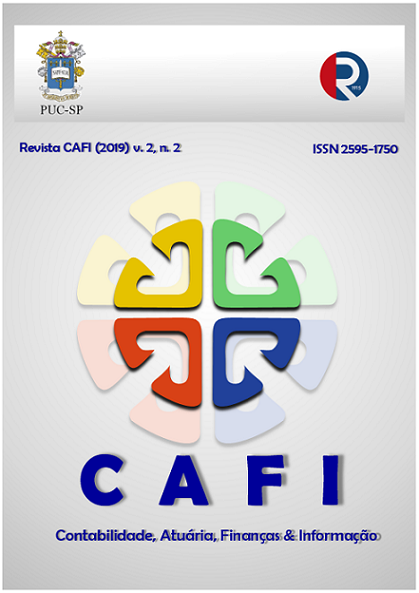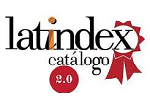Comparative analysis of the brazilian patent process considering the variables time and cost of order grating
DOI:
https://doi.org/10.23925/cafi.v2i2.41064Abstract
This article aims to analyze the process of obtaining patents in Brazil, focusing on the time and costs involved, and to establish a comparison with the same dynamics in other countries such as USA, Japan, Germany, among others. Through data collection and bibliographical analysis, the study presents factors that show the differences in the patenting processes of the countries studied, both with regard to the time involved, and with regard to the costs attributed to the inventor requesting the protection of his invention through a patent. The costs of the process are close in many of the countries studied, but the time of analysis and concession is very different, demonstrating that for the inventor who has to decide between applying for a patent locally in Brazil or doing so in another country, is a major concern. The comparison between the Backlog of patents and the speed of process analysis show the differences in time and importance of patents for the construction of an "innovation structure" within each patent office.
References
Agência Nacional (2014, janeiro). Presidente do INPI defende contratação de funcionários para reduzir prazos. Recuperado de www.ebc.com.br/noticias/brasil/2014/01/presidente-do- inpi-defende-contrataca-de-funcionarios-para-reduzir-prazos
Albuquerque, Eduardo da Motta (1998). Patentes segundo a abordagem neo-Schumpeteriana: uma discussão introdutória. Revista Econômica Política, 18(4).
Alves, Murilo R (2015, maio 24). País Demora 11 anos para aprovar patentes. O Estado de S. Paulo.
Anprotec (2014, abril 23). Brasil é o último em ranking de patentes. Recuperado de http://anprotec.org.br/site/2014/04/brasil-ocupa-penultima-posicao-em-ranking-de-patentes
Deutsches Patent – und Markenant (2017). FAQ. Recuperado de https://www.dpma.de/english/patent/faq/index.html#a9
Ferraz, João, Paula, Germano Mendes, & Kupfer, David (2002). Economia Industrial: fundamento teóricos e práticas no Brasil. São Paulo, Ed. Campus.
Gil, Antonio Carlos (2008). Métodos e técnicas de pesquisa social. São Paulo, Atlas.
Switzerland Patent Office. Costs and fees. Recuperado de https://www.ige.ch/en/protecting- your-ip/patents/before-you-apply/costs-and-fees.html
Instituto Nacional de Propriedad Industrial. Guías y manuales. Recuperado de http://www.inapi.cl/portal/publicaciones/608/w3-propertyvalue-911.html
Instituto Nacional de Propriedade Industrial (1994). Patentes história e futuro. Rio de Janeiro, Inpi.
Instituto Nacional de Propriedade Industrial (2015, dezembro 28). INPI chega aos 45 anos: conheça a história do Instituto. Rio de Janeiro, 2015. Recuperado de http://www.inpi.gov.br/noticias/inpi-chega-aos-45-anos-conheca-a-historia-do-instituto.
Instituto Nacional de Propriedade Industrial (2017). Manual para depositantes de patentes. Rio de Janeiro, Dipra.
IP Australia. Time and costs. Recuperado de https://www.ipaustralia.gov.au/patents/understanding-patents/time-and-costs
Japan patent Office (2017). FAQ – Patent. Recuperado de https://www.jpo.go.jp/english/faqs/patent.html
Kluwer Law (1997). Introduction to intellectual property theory and practice. British Library. Latin American - IPR SME. Helpdesk How much does a patent application cost in Chile?
Recuperado de http://www.latinamerica-ipr-helpdesk.eu/content/how-much-does-patent- application-cost-chile>
Lei 9.249/96: Regula direitos e obrigações referente a propriedade intelectual. Recuperado de http://www.planalto.gov.br/ccivil_03/leis/L9279.htm
Mirabete, Júlio Fabbrini (2005). Processo penal. São Paulo, Atlas.
Netherlands Enterprise Agency. Patent application in the Netherlands – costs. Recuperado de http://english.rvo.nl/topics/innovation/patents-other-ip-rights/apply-patent/netherlands/costs>
Oliveira, Priscila M., Gonçalves, Eduardo, & Almeida, Eduardo (2016, julho-dezembro). Existe convergência de patenteamento no Brasil? Revista Brasileira de Inovação.
Organisation for Economic Co-operation and Development (2006). Science, technology and industry Outlook 2006. Recuperado de http://www.oecd.org/sti/inno/oecdsciencetechnologyandindustryoutlook2006.htm
Paleo, Daniela (2017, abril 6). Registro de Marca leva de seis a oito meses e custa cerca de US
$ 155.000. Recuperado de http://www.diarioeldia.cl/ economia/emprendimiento/registro- marcas-toma-entre-seis-ocho-meses-cuesta-cerca-155-mil
Polakievski, Bronislaw (1996). Patentes: Presente e Futuro da Tecnologia Química. FCF-USP.
Ruiz, Ana U., & Gomes, Cynthia B. (2013, julho-dezembro). Estratégias de cooperação tecnológica transnacional em Estados Unidos e Japão: uma comparação a partir de dados de patentes. Revista Brasileira de Inovação.
Schumpeter, J. A. (1989). Business cycle: a theoretical, historical and statistical analysis of the capitalism process. Philadelphia, Ed. Porcupine.
Sweden Patent Office. Costs. Recuperado de https://www.prv.se/en/patents/ applying-for-a- patent/before-the-application/costs/
United States Patent and Trademark Office (2017a). First Office Action Estimator. Recuperado de https://www.uspto.gov/cgi-in/fao_calc/fao_calc.pl?class= 134&subclass=15&submit=Search+by+Class%2FSubclass
United States Patent and Trademark Office (2017b). USPTO Patent Application Initiatives Timeline. Recuperado de https://www.uspto.gov/patent/initiatives/uspto-patent-application- initiatives-timeline
United States Patent and Trademark Office (2017c). Patents. Recuperado de https://www.uspto.gov/dashboards/patents/main.dashxml
World Intellectual Property Organization. Statistics for researchers – IP statistics data Center. Recuperado de https://www3.wipo.int/ipstats/index.htm?tab=patent
Downloads
Published
How to Cite
Issue
Section
License
Declaração de Direito Autoral
Autores mantém os direitos autorais e concedem à revista o direito de primeira publicação, com o trabalho simultaneamente licenciado sob a Licença Creative Commons Attribution que permite o compartilhamento do trabalho com reconhecimento da autoria e publicação inicial nesta revista.
Declaração de Privacidade
Os nomes e endereços informados nesta revista serão usados exclusivamente para os serviços prestados por esta publicação, não sendo disponibilizados para outras finalidades ou a terceiros.









